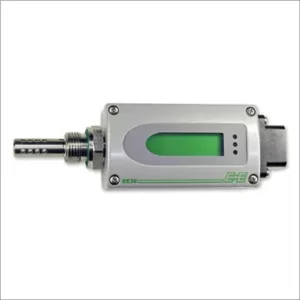A step up transformer is an electrical device used to convert low-voltage (LV) electricity to high-voltage (HV) electricity. It consists of two or more coils of wire wound around a magnetic core. The primary coil, connected to the input, receives the low-voltage electricity. The secondary coil, connected to the output, delivers the higher voltage electricity. Step-up transformers are designed to increase voltage levels while decreasing current levels, enabling efficient transmission of electricity over long distances and facilitating the operation of high-voltage equipment.
How Does a Step-Up Transformer Work?
Increasing voltage in a step-up transformer involves a series of steps that allow for efficient voltage amplification. Let’s explore the process in detail:

Turns Ratio Selection: Step-up transformers are designed with a specific turns ratio, which determines the voltage increase. The primary coil of the transformer has fewer turns compared to the secondary coil, allowing for voltage amplification.
AC Input: An alternating current (AC) input is supplied to the primary coil of the step-up transformer. This AC current flows through the primary coil, creating a changing magnetic field around the coil.
Fluctuating Magnetic Field: The AC current passing through the primary coil causes the magnetic field to expand and contract at the same frequency as the AC input. This fluctuating magnetic field is crucial for the voltage transformation process.
Electromagnetic Induction: The changing magnetic field induces a voltage in the secondary coil through electromagnetic induction. The voltage induced in the secondary coil is directly proportional to the turns ratio between the primary and secondary coils.
Voltage Amplification: As a result of the turns ratio, the induced voltage in the secondary coil is higher than the voltage applied to the primary coil. This voltage amplification is the primary purpose of a step-up transformer.
Current Transformation: The primary current induces a corresponding current in the secondary coil, maintaining the conservation of energy. The magnitude of the current is inversely proportional to the turns ratio. Therefore, as the voltage increases, the current decreases, and vice versa.
The formula of Step up Transformer:
A step up transformer operates based on the voltage ratio formula that determines the voltage and turns ratio between its primary and secondary coils.
The voltage ratio in a transformer refers to the ratio of the voltage in the secondary coil (Vs) to the voltage in the primary coil (Vp). It is affected by the turns ratio.
The formula for the voltage ratio is as follows:
Vs/Vp = Ns/Np
Where:
Vs is the voltage in the secondary
Vp is the voltage in the primary
Ns is the number of turns in the secondary
Np is the number of turns in the primary
we can determine the voltage in the secondary coil:
Vs = (Vp * Ns) / Np
The voltage ratio formula allows us to calculate the output voltage of the secondary coil based on the input voltage and the turns ratio.
Example Calculation for Step Up Transformer
Suppose we have a step up transformer with a turns ratio of 1:5, The primary coil has 100 turns (Np = 100) and an input voltage of 230 volts (Vp = 230V). We need to calculate the output voltage in the secondary coil (Vs).
Using the voltage ratio formula, we can substitute the values into the equation:
Vs = (Vp * Ns) / Np
Vs = (230 * 500) / 100
Vs = 1150 volts
Applications of Step Up Transformers
Step-up transformers find widespread applications in various industries. Let’s explore some common applications where step-up transformers play a vital role:
1. Power Transmission
Step-up transformers are crucial in the power transmission industry. They are used in electrical substations to increase the voltage of electricity generated at power plants, typically at lower levels, for efficient transmission over long distances. The higher voltage reduces energy loss during transmission and allows electricity to be distributed to consumers effectively.
2. Renewable Energy Integration
In renewable energy systems such as wind farms or solar power plants, step-up transformers are employed to increase the voltage of electricity generated by the renewable sources. This increased voltage allows for efficient transmission of the electricity into the grid or to long-distance distribution networks.
3. Industrial Applications
Step-up transformers are utilized in various industrial applications where high voltage is required. Industries such as manufacturing, mining, and chemical plants often use high-voltage equipment, which necessitates the use of step-up transformers to power these devices.
4. Electrical Equipment Testing
In laboratories or specialized facilities, step-up transformers are employed to simulate high voltage conditions for testing electrical equipment’s performance and safety. This enables engineers and technicians to evaluate the equipment’s resilience and ensure compliance with safety standards.
5. Scientific Research
Step-up transformers are crucial in scientific research, particularly in fields such as physics and material sciences. They are used to create high-voltage environments for experiments, particle accelerators, or plasma research, enabling scientists to study various phenomena under controlled conditions.
6. Railways and Transportation
Electric trains and railway systems rely on step-up transformers to increase the voltage for efficient power transmission along railway tracks. Step-up transformers enable the trains to draw power from the overhead lines or the third rail at higher voltages, ensuring smooth and reliable operation.


Be First to Comment